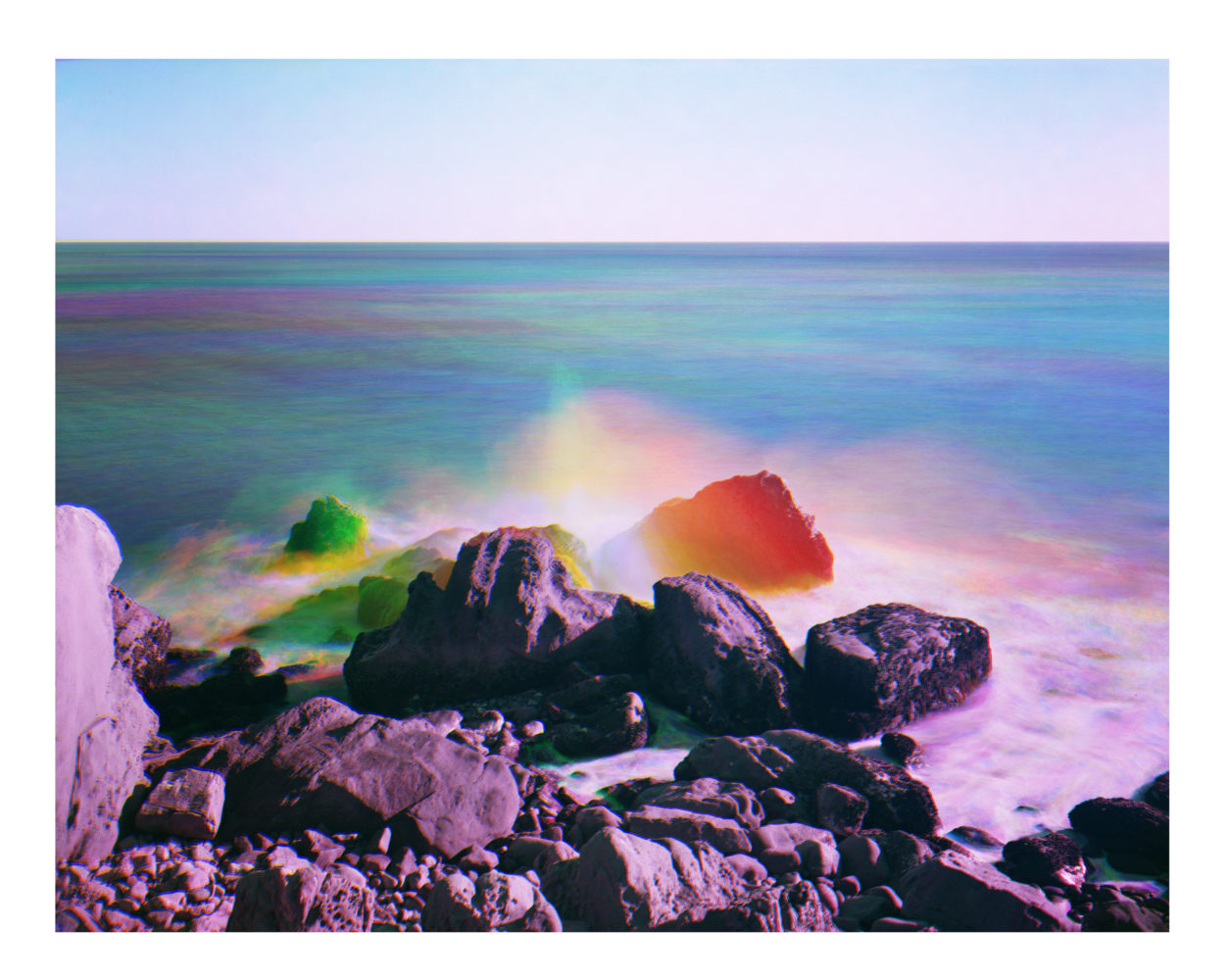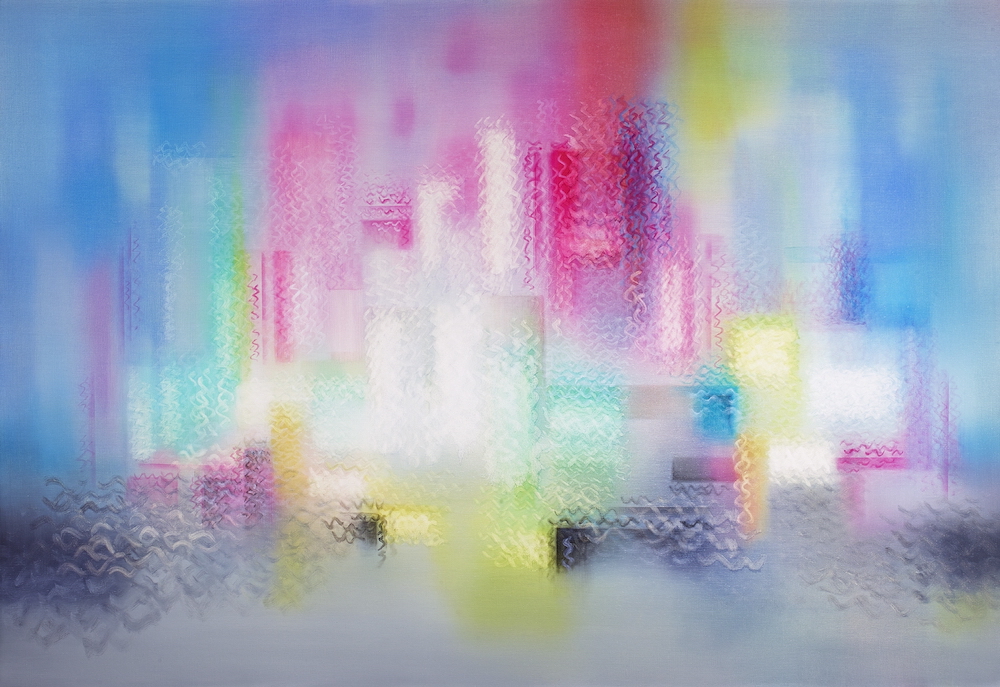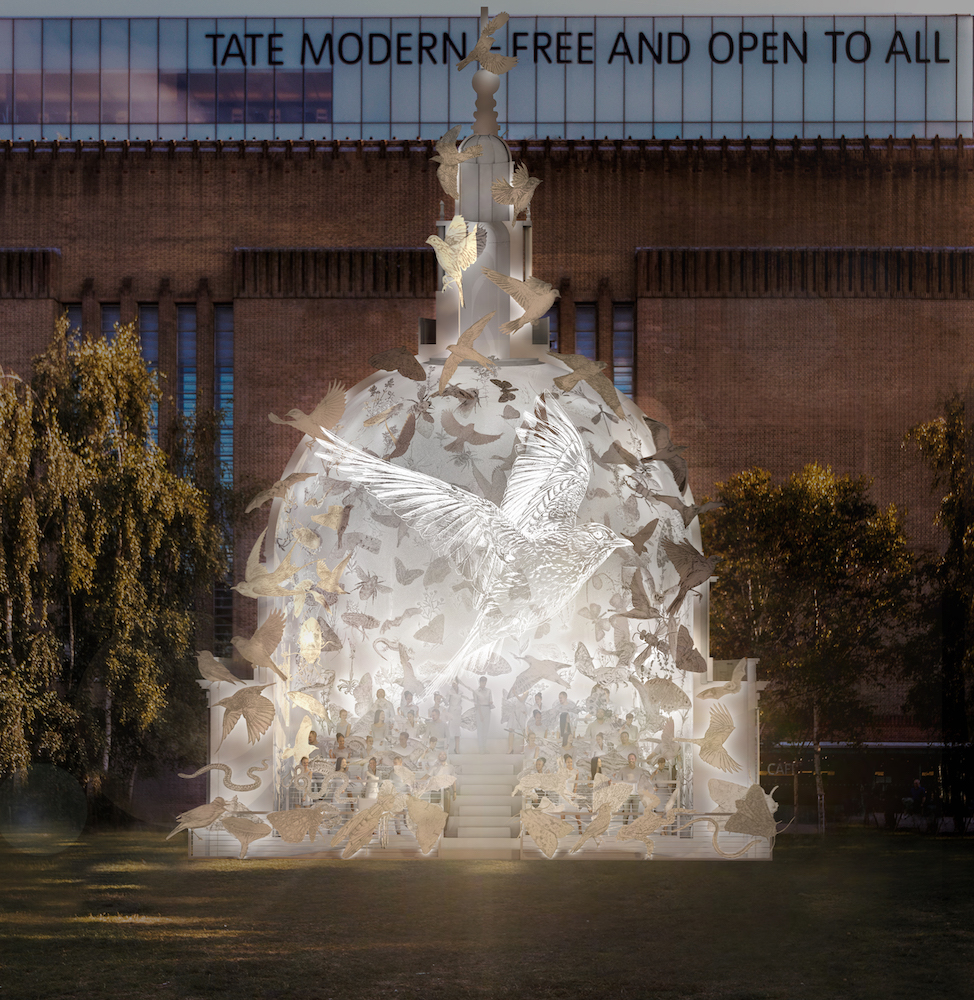Pulane Kingston is more than an art collector. She’s a member of the Africa Acquisitions Committee at the Tate Modern, a member of the advisory board of the Zeitz Museum of Contemporary Art Africa, an Art Basel patron, and more. Through an array of international travel and relationships centered around art, she has developed an astounding collection full of multimedia works. With it, she’s fortifying stories of Africa—the history, people, and movements that make it what it is, and isn’t, today. Whitewall spoke with the collector about the piece that sparked the beginning of her collection, which artists she’s supporting today, and why she’s leaving the “boys’ club” to the boys.
WHITEWALL: You’re deeply invested in the art world. What do you feel is your strongest responsibility?
PULANE KINGSTON: Quite apart from the immense pleasure that I derive from an appreciation of visual art, my greatest responsibility lies in promoting contemporary art from our continent across those platforms where I have some level of influence internationally. I fashion my role and responsibility by creating possibilities and advocating for African visual arts. This means investment in the cultivating, development, nurturing, and improvement of resources, systems, and institutions that contribute to the national, continental, and diasporic African visual arts. I provide access and opportunities to marginalized or neglected but talented and deserving contemporary artists that are part of and deserve participation and recognition within the ever-shifting global arena.
Domestically, this entails supporting individual artists and lending a hand in facilitating projects from concept through to fruition. This also involves actively supporting and promoting African women contemporary artists who I believe remain on the margins of the art world, despite the exceptional quality of their work. Lastly, this means playing a role in creating platforms for a greater understanding of and appreciation of visual art for pure aesthetic pleasure and, more importantly, for the role that it can play in facilitating discussion and debate around the sociopolitical issues of our times.
Given the specificities of our individual and collective history on the African continent, it is critical for me to play my part in encouraging a broader diversity of art enthusiasts and collectors through exposure and education. On the international stage, there has been a steadily growing interest in art that is produced in Africa, so it is important that this interest grows in a sustainable manner.
WW: And that extends through your work at Zeitz MOCAA and Tate Modern, too?
PK: Being a member of the advisory board of the Zeitz Museum of Contemporary Art Africa gives me the opportunity to play a role in this regard, not only for the benefit of South African citizens, but also insofar as people from the rest of the continent and across the world who visit this cultural capital are concerned. And being a member of the Africa Acquisitions Committee at the Tate Modern means I have the opportunity to play a role in the preservation and insertion of our master artists who historically made a huge contribution to the art world in their rightful place alongside their European and American counterparts. Hopefully, we will see more museums and institutions following suit.
WW: There’s been a lot of change in the contemporary art market, ranging from the structure of fairs and galleries to what people are buying. What do you feel is the most exciting thing happening to the contemporary art world right now?
PK: There are two exciting things that are happening in the contemporary art world at this time. The first is the increased visibility and interest in art from Africa at key galleries and art institutions across the world. Also, for the first time, major collections around the world seriously looking into and acquiring African art for their collections.
Associated with the increased visibility of artworks from Africa is the recognition of the prohibitive cost of small- to medium-sized galleries in participating at the most prestigious art fairs and the ongoing debate about the possibility of the larger galleries subsidizing smaller galleries. I wait with bated breath to see what the outcome of these discussions will be.
WW: Can you tell us about the first piece you acquired—a reproduction print of Blue Nude II (1952) by Henri Matisse. Can you tell us a bit about that acquisition? Is it a work you still have?
PK: I come from a deeply political family, with parents, aunts, and uncles who were revolutionaries in their own right. Having taken up membership of the African National Congress (ANC) in the fifties, and living across the African continent in the ’sixties, seventies, and eighties, my family is also made up of exceptionally strong and dynamic matriarchs, most of whom are poets, writers, art enthusiasts, and cultural ambassadors. My formative years were characterized by a regular exposure to political debate and discussion, as well as an ongoing display and inculcation of a culture of inquisitiveness insofar as the arts are concerned.
Having been exposed to the poster protest art that characterized our struggle, it was only natural for me when I got to university in the United Kingdom to identify with this form of art as opposed to painting. As a young woman, I was in a period of self-discovery, and when I saw Blue Nude II, I was drawn to its sensuality, which was visually appealing to me—the feminine lines and the life-sized scale of perfect imperfection. It felt familiar to me, like the pieces of the women in my family that I carried with me everywhere I went. When I laid my eyes on it, it spoke to me, so I used the monthly stipend that I received as a beneficiary of a scholarship on this work of art.
I unfortunately no longer have the work. One of the numerous violations that come with displacement are the things that get lost in the crossfire of forced migration. You lose family, friends, special mementos, and a myriad of other physical markers of one’s existence. What remains are memories and shared stories.
WW: How did your collection evolve from there?
PK: Initially, my focus centered around collecting the works of black South African master artists of historical significance who, despite their technical mastery, had largely been marginalized due to their race, including George Pemba, Gerard Sekoto, and Dumile Feni. I also paid keen attention to and collected the works of a slightly younger generation of technically competent South African masters, such as Irma Stern, Robert Hodgins, and William Kentridge.
In the last few years, as I have become more alive to and interested in the dynamics of the postapartheid South African art scene, the principles around my approach to collecting have been fine-tuned. Prior to this, I had not even viewed myself as a collector. I had simply bought art of historic significance, and if it was aesthetically pleasing, that was a bonus.
I started spending much more time at galleries and museums, not only in South Africa but also in Europe and North America. I forged relationships with a number of gallery owners and academics in the art world, was a regular visitor at South African art fairs FNB Joburg and Investec Cape Town, and dedicated myself to two years of nonstop international travel to the major art events—The Armory, Art Basel, Frieze, the Venice Biennale, Documenta, Münster—under the close supervision and guidance of Liza Essers, owner of the Goodman Gallery. Perhaps most significant for me is that I began meaningfully engaging with individual artists to understand their individual art practices. What an incredible eye- opener and learning experience . . .
WW: How did those experiences change the direction of your collecting?
PK: This exposure led me to reconsider my “collection” and to ask myself questions about what resonated with me most. Was it still the South African historic masters, or was my interest shifting to work that was more contemporary? Were the themes reflected in the works of art I owned ones that I still connected with at a deeper level? Lastly, I considered very deliberately where I could make the greatest impact over time in terms of the work I collected and the related themes. These considerations contributed significantly to the parameters which I developed and that define how I go about collecting works of art.
WW: Would you say there is a guiding principle behind your approach to collecting?
PK: I would define the principles that currently guide my approach to collecting as falling into loose buckets: a focus on marginalized and neglected artists who are talented and deserving of being showcased—in a South African, African context, this happens to predominantly be black women artists; a selection of a limited number of identified artists whose work I focus on collecting deeply so as to enable me to follow and support the development of their careers; a goal of 200 works of the most significant works of art that I can afford that are produced by these artists, across the media spectrum, so a retrospective and prospective exercise which is not altogether common. This period starts with the year that South Africa gained independence and the year that it held its first democratic elections and ends after 30 years of democracy. I look forward to the balance of this journey.
While there are no specific themes that I necessarily pay attention to, I have found myself naturally gravitating toward works that deal with the politics of identity, gender, representation, healing, spirituality, history, Afrofuturism, and postcolonialism. After all, these are the issues of our time!
WW: Is it important for you to collect the work of an artist in depth?
PK: It is essential for me to do this given the sort of collection I am in the process of building. My perspective is that this depth, firstly, enables me to feel that I am supporting the artists’ ability to create more work and be innovative. It also enables me to fully appreciate the career trajectory of the chosen artists.
WW: Do you gravitate toward one medium over another?
PK: I started off by being more comfortable with figurative painting, but a combination of factors has evolved what I gravitate toward, including understanding that artists are rarely one-dimensional. This led me to be curious about and develop an interest in and appreciation of the broad spectrum of mediums. I follow artists and where their art takes me.
WW: You’ve made a point of collecting art by women, and, particularly, African women. In a past interview, you said they bring “a new impetus to the art ecosystem, adding their fresh voices to reflections on questions of history, identity, sexuality, representation, healing, and spirituality.” Who are you seeing do this today?
PK: I am seeing quite a few of these artists emerging. Artists such as Bronwyn Katz, Zanele Muholi, Billie Zangewa, and Kudzanai-Violet Hwami immediately come to mind. Wangechi Mutu, Kapwani Kiwanga, Grada Kilomba, Dineo Bopape, Tabita Rezaire, Peju Alatise, and Njideka Akunyili-Crosby are also growing in international acclaim.
WW: Is there a work you like to wake up to every morning, or see in your office every day that particularly inspires you?
PK: Absolutely! If I were pressed to choose just one work, it would have to be Inyanga yesibini echithayo, inyanga yesibini ethathayo (2016) by the South African artist Nicholas Hlobo. It is a diptych which I find as fascinating today as I did when I acquired it.
WW: Is there a work you dream of having?
PK: One work of art is by Lynette Yiadom-Boakye from her ballet series that I saw at Jack Shainman Gallery’s booth at Art Basel two years ago. I kick myself to this day for choosing to go and “think about it” over lunch. Of course when I returned, it was gone.
And then of course if I could own just one work of art, it would be by Kerry James Marshall. I am his greatest fan.
WW: Is there a work you’d never sell?
PK: I am not sure that I would sell any of the works that I have acquired. Each work has a meaningful story attached to it, and as such I feel a special connection to all of the artworks that I have bought—all for different reasons.
WW: How has living with art had an impact on your life?
PK: It has enhanced my life. From an aesthetic perspective, it gives dimensions of beauty. It also opens us all up to other worlds and experiences. Being in constant dialogue with these artworks, they make me think and appreciate the worlds of imagination and the artistic interpretations of our time. The artwork that I own also inform what is to come in terms of what I may look to acquire next.
WW: As a collector, you must be constantly looking and seeing new work. Who are some of the artists you’re excited about at this moment?
PK: I am drawn to Nolan Dennis’s delicate and elaborate line drawings, which evoke ideas of symbolic cartography. Kudzanai-Violet Hwami from Zimbabwe’s powerful nudes raise lingering questions about how the black body is represented. I have found Bronwyn Katz’s work extremely interesting in the last year, as I see her work as a process of deconstructing. One cannot help but be immediately drawn to Cinga Samson’s almost haunting figurative self-portrait oil paintings in which he addresses themes of youth, blackness, masculinity, and spirituality. And Igshaan Adams, best known for his woven sculptures, which speak to issues of race, religion, and sexuality.
WW: What are some of your recent acquisitions you’re looking forward to hanging in your home?
PK: I acquired my first silk tapestry, entitled Afternoon Delight (II), by the woman artist Billie Zangewa in September 2018. I also cannot wait to hang my latest abstract work by the young London-based Nigerian artist Jadé Fadojutimi. This particular work evokes the feeling of looking into the depths of my soul, through what looks like a large windowpane, and is a riotous and expressive explosion of hues of bright oranges and blues—colors which I associate with emotions. I am equally excited to add to my collection another of Zanele Muholi’s black-and-white photographic portraits. And finally, I am so excited to soon be hanging a vast and unapologetically powerful political statement of a painting by Kudzanai Chiurai from Zimbabwe.
WW: There are still more men represented than women in galleries. You previously mentioned that the statistics suggest that “when women artists are able to break into the ‘boys’ club’ and find some measure of art-market success, they are likely to be, on average, more successful than their male counterparts.” How do you think women can break this mold, and break into the “ boys’ club”?
PK: I have spent much time wondering about this “boys’ club” and I am not sure that breaking into this mold will get significant women artists who find the measure of success that they deserve. I would like to invite more women to leave the boys’ club to boys and create their own clubs and rules which suit them. We are in fact already seeing this happen in South Africa in different ways—more women are creating collectives, which enable a network which more often than not ensures their recognition as individual artists. This suggests to me that when women come together the fact of their numbers shines a spotlight on them, which then invites closer scrutiny into them as individual artists.
I am also seeing that as the face and gender of gallery owners and heads of art institutions experiences greater gender diversity, more artwork that is produced by women artists is being exhibited by these establishments. In the context of the auction market, we will see more women’s art being auctioned over time given the current increased acquisition of art by women artists.









